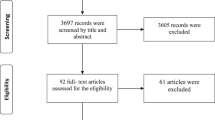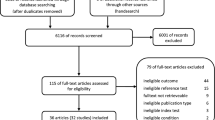Abstract
INTRODUCTION: It is still a matter of debate as to how to define obesity in young people, although a growing consensus is to use body mass index (BMI) cutoffs to classify obesity in children and adolescents.
OBJECTIVE: This article provides a brief overview of issues related to the assessment of obesity in children and adolescents.
RESULTS: At present, BMI is probably the best choice among available measures. BMI can be easily assessed at low cost, and has a strong association with body fatness and health risks. However, as an indirect measure of adipose tissue, BMI has a number of limitations. Cole et al published a set of sex- and age-specific BMI cutoffs, which had been developed based on data collected in six countries, and the reference has been recommended for international use. Recently, several researchers have raised concerns regarding this international reference. It has been argued that population-specific standards should be used due to biological differences between populations.
CONCLUSION: BMI is a valid and feasible indirect measure of body fatness, but it suffers from a number of limitations. More efforts are needed to develop valid classifications of childhood obesity.
This is a preview of subscription content, access via your institution
Access options
Subscribe to this journal
Receive 12 print issues and online access
$259.00 per year
only $21.58 per issue
Buy this article
- Purchase on Springer Link
- Instant access to full article PDF
Prices may be subject to local taxes which are calculated during checkout



Similar content being viewed by others
References
World Health Organization. Obesity: Preventing and managing the global epidemic, Report of a WHO consultation. WHO Technical Report Series, No. 894, WHO: Geneva; 2000.
Cole TJ, Bellizzi MC, Flegal KM, Dietz WH . Establishing a standard definition for child overweight and obesity worldwide: international survey. BMJ 2000; 320: 1240–1243.
Dietz WH, Robinson TN . Use of the body mass index (BMI) as a measure of overweight in children and adolescents. J Pediatr 1998; 132: 191–193.
Kuczmarski RJ, Ogden CL, Grummer-Strawn LM . CDC Growth Charts: United States, Advance Data. No. 314, 2000.
Prentice AM, Jebb SA . Beyond body mass index. Obes Rev 2001; 2: 141–147.
Reilly JJ . Assessment of childhood obesity: national reference data or international approach? Obes Res 2002; 10: 838–840.
Power C, Lake JK, Cole TJ . Measurement and long term health risks of child and adolescent fatness. Int J Obes Relat Metab Disord 1997; 21: 507–526.
Misra A . Revisions of cutoffs of body mass index to define overweight and obesity are needed for the Asian–ethnic groups. Int J Obes Relat Metab Disord 2003; 27: 1294–1296.
Stevens J . Ethnic-specific revisions of body mass index cutoffs to define overweight and obesity in Asians are not warranted. Int J Obes Relat Metab Disord 2003; 27: 1297–1299.
World Health Organization Expert Committee. Physical status, the use and interpretation of anthropometry, WHO Technical Report Series No. 854. WHO: Geneva; 1995.
Ellis KJ, Abrams SA, Wong WW . Monitoring childhood obesity: assessment of the weight/height2 index. Am J Epidemiol 1999; 150: 939–946.
Franklin MF . Comparison of weight and height relations in boys from 4 countries. Am J Clin Nutr 1999; 70: 157S–162S.
Deurenberg P . Universal cut-off points for obesity are not appropriate. Br J Nutr 2001; 85: 135–136.
Deurenberg P, Yap M, van-Staveren WA . Body mass index and percent body fat: a meta analysis among different ethnic groups. Int J Obes Relat Metab Disord 1998; 22: 1164–1171.
Ellis KJ . Body composition of a young, multiethnic, male population. Am J Clin Nutr 1997; 66: 1323–1331.
Deurenberg P, Deurenberg-Yap M, Foo LF, Schmidt G, Wang J . Differences in body composition between Singapore Chinese, Beijing Chinese and Dutch children. Eur J Clin Nutr 2003; 57: 405–409.
Wells JC, Coward WA, Cole TJ, Davies PS . The contribution of fat and fat-free tissue to body mass index in contemporary children and the reference child. Int J Obes Relat Metab Disord 2002; 26: 1323–1328.
Cole TJ, Freeman JV, Preece MA . Body mass index reference curves for the UK, 1990. Arch Dis Child 1995; 73: 25–29.
Must A, Dallal GE, Dietz WH . Reference data for obesity: 85 and 95th percentiles of body mass index (wt/ht2) and triceps skinfold thickness. Am J Clin Nutr 1991; 53: 839–846.
Rolland-Cachera MF, Cole TJ, Sempé M, Tichet J, Rossignol C, Charraud A . Body mass index variations: centiles from birth to 87 y. Eur J Clin Nutr 1991; 45: 13–21.
Wang Y, Wang JQ . A comparison of different international references for the assessment of child and adolescent overweight and obesity in different populations. Eur J Clin Nutr 2002; 56: 973–982.
Al-Sendi AM, Shetty P, Musaiger AO . Prevalence of overweight and obesity among Bahraini adolescents: a comparison between three different sets of criteria. Eur J Clin Nutr 2003; 57: 471–474.
Zimmermann MB, Hess SY, Hurrell RF . A national study of the prevalence of overweight and obesity in 6–12 y-old Swiss children: body mass index, body-weight perceptions and goals. Eur J Clin Nutr 2000; 54: 568–572.
Wang Y, Ge K, Popkin BM . Tracking of body mass index from childhood to adolescence: a 6-y follow-up study in China. Am J Clin Nutr 2000; 72: 1018–1024.
Chinn S, Rona RJ . International definitions of overweight and obesity for children: a lasting solution? Ann Hum Biol 2002; 29: 306–313.
Mo-suwan L, Tongkumchum P, Puetpaiboon A . Determinants of overweight tracking from childhood to adolescence: a 5 y follow-up study of Hat Yai schoolchildren. Int J Obes Relat Metab Disord 2000; 24: 1642–1647.
Wang Y . Is obesity associated with early sexual maturation? A comparison of the association in American boys vs girls. Pediatrics 2002; 110: 903–910.
Wang Y, Adair L . How does maturity adjustment influence the estimates of overweight prevalence in adolescents from different countries using an international reference? Int J Obes Relat Metab Disord 2001; 25: 550–558.
Wang Y, Monteiro C, Popkin BM . Trends of obesity and underweight in older children and adolescents in the United States, Brazil, China and Russia. Am J Clin Nutr 2002; 75: 971–977.
Zhang Q, Wang Y . Socioeconomic inequality of obesity in the United States: do gender, age, and ethnicity matter? Soc Sci Med 2004; 58: 1171–1180.
Author information
Authors and Affiliations
Corresponding author
Rights and permissions
About this article
Cite this article
Wang, Y. Epidemiology of childhood obesity—methodological aspects and guidelines: what is new?. Int J Obes 28 (Suppl 3), S21–S28 (2004). https://doi.org/10.1038/sj.ijo.0802801
Published:
Issue Date:
DOI: https://doi.org/10.1038/sj.ijo.0802801
Keywords
This article is cited by
-
Association of adiponectin gene expression with atrial fibrillation in a Pakistani populace
Scientific Reports (2023)
-
The treatment of obesity in children and adolescents: consensus position statement of the Italian society of pediatric endocrinology and diabetology, Italian Society of Pediatrics and Italian Society of Pediatric Surgery
Italian Journal of Pediatrics (2023)
-
Use of various obesity measurement and classification methods in occupational safety and health research: a systematic review of the literature
BMC Obesity (2018)
-
Ethnic disparities in childhood BMI trajectories and obesity and potential causes among 29,250 US children: Findings from the Early Childhood Longitudinal Study-Birth and Kindergarten Cohorts
International Journal of Obesity (2018)
-
Overweight and obesity epidemic in Ghana—a systematic review and meta-analysis
BMC Public Health (2016)



